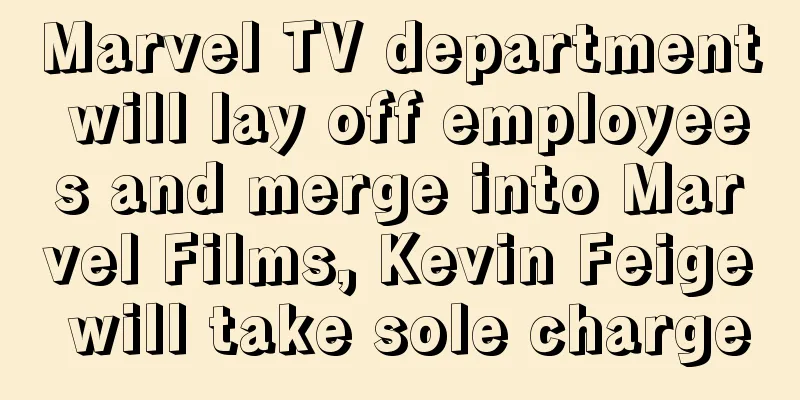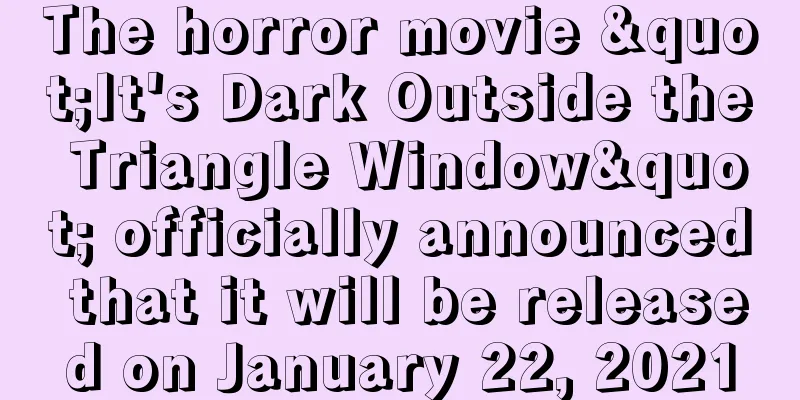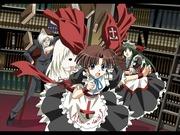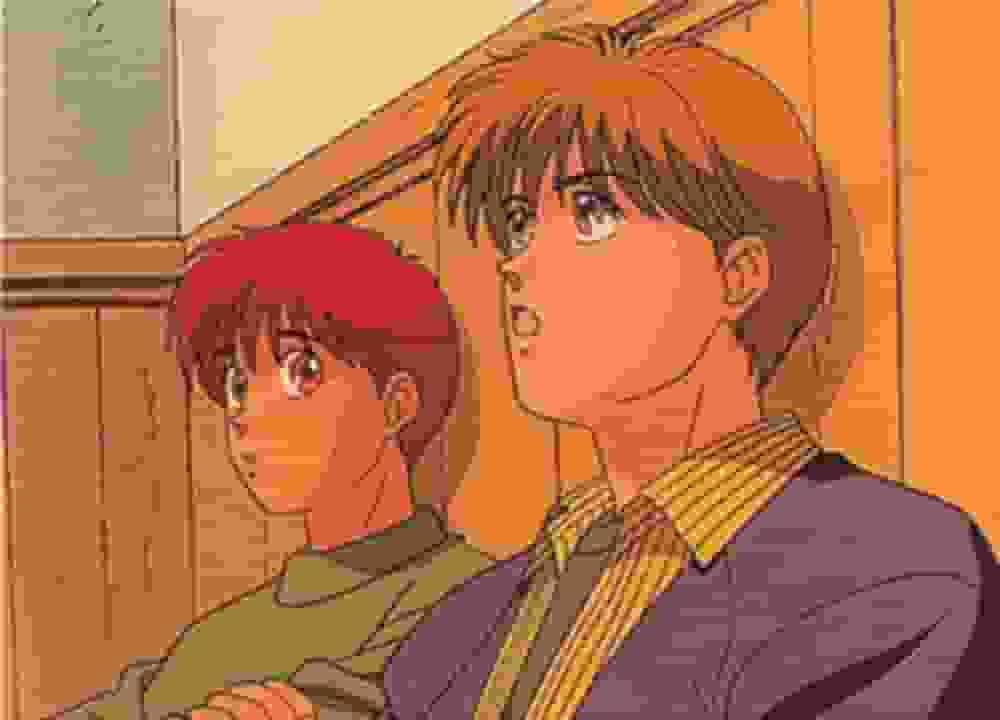Graveyard Kitaro: A fusion of the supernatural and the moving, a review of a modern anime masterpiece
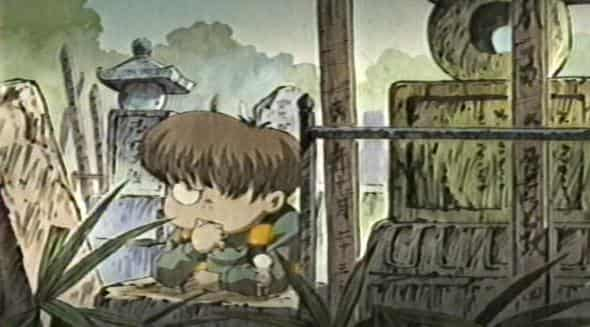
A comprehensive review and recommendation of Hakaba no Kitaro■ Public MediaTV anime series ■ Original Mediacomics ■ Broadcast periodJanuary 11, 2008 - March 21, 2008 Fuji TV January 11, 2008 to March 21, 2008 (Episodes 1 to 11) Every Friday 0:45 to 1:15 (Thursday late night) Kansai TV January 16, 2008 to April 2, 2008 (Episodes 1 to 11) Every Wednesday 1:45 to 2:15 (Tuesday night) Tokai TV January 18, 2008 to March 28, 2008 (Episodes 1 to 11) Every Friday 2:05 to 2:35 (late Thursday night) Television Nishinippon January 24, 2008 to April 3, 2008 (Episodes 1 to 11) Every Thursday 2:15 to 2:45 (Wednesday night) Niigata Sogo TV January 25, 2008 to April 4, 2008 (Episodes 1 to 11) Every Friday 2:00 to 2:30 (Thursday late night) Hokkaido Cultural Broadcasting February 6, 2008 to April 16, 2008 (Episodes 1 to 11) Every Wednesday 1:10 to 1:40 (Tuesday late night) Sanin Chuo Television March 3, 2008 to June 23, 2008 (Episodes 1 to 11) Every Monday 0:45 to 1:15 (Sunday late night) Kumamoto Television March 19, 2008 to May 28, 2008 (Episodes 1 to 11) Every Wednesday 2:05 to 2:35 (Tuesday night) TV Shin-Hiroshima April 10, 2008 to June 19, 2008 (Episodes 1 to 11) Every Thursday 1:00 to 1:30 (Wednesday late night) Nagasaki Television June 21, 2008 to September 6, 2008 (Episodes 1 to 11) Every Saturday 1:45 to 2:15 (Friday night) Saga TV October 16, 2008 to January 8, 2009 (Episodes 1 to 11) Every Thursday 0:35 to 1:05 (Wednesday late night) Fuji TV 721 December 4, 2008 to January 1, 2009 (Episodes 1-11) Every Thursday 1:00-1:50 (Wednesday late night) *2 episodes broadcast consecutively ■Broadcasting stationCX ■Frequencieshalf an hour ■ Number of EpisodesEpisode 11 ■Original Story・Original work: Shigeru Mizuki Graveyard Kitaro ・Mizuki Productions ■ Director・Series Director: Kimitoshi Chioka ■ Production・Animation Production: Toei Animation Produced by: Hakaba Kitaro Production Committee (Fuji Television Network, Asmik Ace Entertainment, SKY Perfect TV Wellthink, Sony Music Entertainment, Dentsu, Toei Animation, Yomiuri Advertising) ■Works© Mizuki Productions, Hakaba Kitaro Production Committee ■ StoryThe time is the 1950s. Ten years have passed since the end of the war, and as the high economic growth accelerates, the rich get richer, but at the bottom of society, there are many people who survive day to day, covered in mud. Into such a society, Kitaro is born from a grave as the last surviving ghost. What is hell? What is this world? Returning to the philosophy of Shigeru Mizuki, who thoroughly examined the happiness of living, the original Kitaro laughs at humans and sings the praises of the joy of living. ■ExplanationForty years have passed since the first broadcast of the first season of Gegege no Kitaro, and the long-awaited origin of Kitaro, "Hakaba no Kitaro", is finally making its TV debut! Here, the untold story of Kitaro's birth is revealed. *Quoted from the Fuji TV official website ■Cast・Kitaro / Masako Nozawa ・Eyeball Dad / Isamu Tanonaka ・Rat Man/Norio Otsuka ・Sleeping child/Shoko Nakagawa ・ Mizuki/Toru Okawa ・Ghosts / Kozo Shioya ・Fake Kitaro/Ikura Kazue Kitaro's father (when alive) / Daisuke Gori Kitaro's Mother / Reiko Suzuki ・Mizuki's mother / Mayama Ako ・President: Masaharu Sato ・Yaksha / Hori Hideyuki Dracula IV / Ryuzaburo Otomo ・Water God / Yasuhiko Kawazu ・Werewolf/Katsuhisa Takagi ・Lady Toad / Yoko Kawanami ・Vampire Johnny / Masashi Ehara Kanamaru/Hidekatsu Shibata ・Mary/Naomi Shindo ・Murata/Mitsuru Miyamoto ・Ikegaki/Tomoaki Nishimura ・Shigeru Mizuki/Bin Shimada Mizuki's Wife / Kimiko Saito ・Caroline/Shiori Ehara ・Dr. Gamotsu/Ginga Banjo ・Advarana/Yasuhiro Takato ・ Mizuki from the Underground / Masato Ohba ・Fallen Leaves/Koji Yada ・Director: Fumihiko Tachiki ・ Mizuki Sagaru/Jurota Kosugi ・Tompo/Natsuhiko Kyogoku Trump Shigei/Pierre Taki ■ Main staff・Original work: Shigeru Mizuki ・Planning: Yoko Matsuzaki (Fuji Television) Produced by Yukihiro Ito (Fuji Television Network), Shinji Shimizu (Toei Animation), Yuuro Toyoshima (Asmik Ace Entertainment), Shuichi Machida (Dentsu), Taizo Ito (Sony Music Entertainment), Shigehiro Hayashida (Sky Perfect TV Wellthink), Kyotaro Kimura (Yomiuri Advertising) Producers: Atsuya Takase, Kosuke Hosomi (Fuji Television), Atsutoshi Umezawa, Yoshiyuki Ikezawa (Toei Animation) ・Series Director: Kimitoshi Chioka ・Series Composition: Narita Yoshimi ・Music by Kaoru Wada ・Character design and chief animation director: Naoyoshi Yamamuro ・Art design: Yoshiaki Homma ・Art board/Takashi Kurahashi ・Color design/Kunio Tsujita ・Director of photography: Akira Iribe ・CG Director: Nobuhiro Morita Edited by Kenta Katase ・Animation Production: Toei Animation Produced by: Hakaba Kitaro Production Committee (Fuji Television Network, Asmik Ace Entertainment, SKY Perfect TV Wellthink, Sony Music Entertainment, Dentsu, Toei Animation, Yomiuri Advertising) ■ Main Characters・Graveyard Kitaro The last surviving ghost. He brings misfortune to everyone he comes into contact with... ・Eyeball Dad Kitaro's father. He was afflicted with an incurable disease, but was resurrected with only his eyeballs to protect Kitaro. ・Mouse Man A self-proclaimed genius who graduated from the Unclean Department of Mystery University. However, when it comes to cunning, he is no match for Kitaro... ・Kitaro's mother She dies while pregnant with Kitaro. Does she also have a gentle side, showing concern for those who are dying? Mizuki Unfortunately, he was the first man to encounter Kitaro. Despite raising Kitaro, he was sent to hell. ・Mizuki's mother She feels disgusted and dislikes Kitaro, who her son has brought home. Believing Kitaro to be a ghost, the mother is convinced that Kitaro is behind her son's absence, and so she takes action... ·president The president of Mizuki's company. Fearing that the public will find out that a patient at a hospital run by an affiliated company has become a ghost, he sends Mizuki to investigate. Guardian of Hell He receives tickets from those who have visited hell and leads them there. ·fortune teller Mizuki's mother consults a fortune teller who tells her that misfortune comes from nearby, and the only way to remove the source of it is to throw her into the entrance of hell. ・Dr. Arima He has been researching Yaksha for 50 years. He was banished the moment he presented his findings at an academic conference. He crawled to a remote place deep in the mountains to prove that he could revive Yaksha, but was killed by the Yaksha right after digging it up. Yasha A vampire who came from China 1000 years ago. He manipulates Kitaro, makes him run a boarding house, and lures humans. ・Dracula IV The fourth generation of the Dracula family, who plunged Europe into the depths of terror 300 years ago, came to Japan, hired the Ratman, and began collecting and sucking human blood. ・Sleeping Kitaro's first love, a pretty girl who aspires to be a singer. A forbidden tale of sorrow unfolds between Kitaro and Neko. What decision will Neko make? Trump Shigei A top pop singer. Because he despised Ratman, he had a blood-sucking tree bud planted in his body... ・Vampire tree It grows by sucking human blood and turns the person it possesses into a tree. ・Ghost With the advancement of science, these monsters are no longer a threat to humans and have become poor. ・Fake Kitaro He steals Kitaro's chanchanko and goes to hell, where he plots with Ratman to get a large sum of money. ・Water God It has shape-shifting, transparent cells, and has eaten people while blending into the water. It pursues Kitaro, who has disturbed its sleep, and plunges Tokyo into panic. President Kyomori A mysterious president who also lends money to monsters. ・Swallow of the Sky A famous singer who leads the times. He is equally as popular as Trump Shigei. Werewolf He usually appears like a gentleman, but on moonlit nights he transforms into a wolf. Once he becomes a werewolf, he loses all sense of judgement and will attack anyone, even those he has feelings for. ・Lady Gama A woman with a zipper on her mouth. She has the charm to make grown men fall head over heels in love with her. No one knows why she is so popular. Murata An unsuccessful manga artist struggling with rent arrears, his landlord introduces him to Kanamaru as a job opportunity, and he becomes embroiled in a ghost commotion. Kanamaru His house is taken over by a ghost, so he hires Murata to get it back. He is not afraid of ghosts at all. Guide His role is to guide people who get lost in the mysterious darkness to the exit. He preaches that life is like a comic book. Johnny He is a master of the guitar, and his sound has the power to attract and fascinate people. He is a vampire who plans to suck the blood of 1000 people and hires Nezumi-Otoko as his secretary. He is after the blood of Prime Minister Ikegaki. Prime Minister Ikegaki The Prime Minister at the time. He is being targeted by "Johnny in the Fog" for his blood, so he asks Kitaro to help him get rid of him. ・Shigeru Mizuki A manga artist who has been drawing Kitaro. He meets Kitaro by chance and is delighted that his imaginary Kitaro has become real, so he invites him into his home, but... ・Advarana A ghost from the south. Despite its strange appearance, it is familiar with the human world. ・Dr. Gamotsu A scholar who has been researching the Brigadoon phenomenon, he plans to establish a ghost paradise on Earth by establishing a university for the supernatural there. ・Caroline She is a talented woman who graduated from a university in France and is the daughter of Gamotsu. Kitaro and Ratman are in love with her. Although she says she won't marry someone who doesn't graduate from university, she also has a side to her that says she likes "useless men." ・Tompo A clairvoyant summoned from Tibet to see inside Brigadoon and seek advice. ・ Mizuki Sagaru He is writing a novel about the afterlife and is interested in the world after death. He takes out the "afterlife insurance" recommended by Kitaro and receives an invitation to the Horror Olympics, but... Director Ratman heads to the Horror Olympics in search of a hair growth elixir that will grant him immortality. ■Subtitle・Episode 1: The Birth of Kitaro (2008/01/10) Episode 2: Yasha vs. Dracula IV (2008/01/17) ・Episode 3/Vampire Tree (2008/01/24) ・Episode 4/Neko (2008/01/31) ・Episode 5: Fake Kitaro (2008/02/07) ・Episode 6: Water God (2008/02/14) ・Episode 7: Werewolf and the Ghost Train (2008/02/21) Episode 8: Mysterious Battle (2008/02/28) ・Episode 9: Johnny in the Fog (2008/03/06) Episode 10: Brigadoon (2008/03/13) Episode 11: Stupid Man (2008/03/20) ■ Related works・GeGeGe no Kitaro series ■ Theme songs and music・OP1 ・Mononoke Dance Lyrics: Takkyu Ishino, Pierre Taki ・Composition: Takkyu Ishino ・Arrangement: Denki Groove ・Song: Denki Groove ・ED1 ・Snow Tears Lyrics: 1pack market, Shoko Nakagawa ・Composer: Daisuke Suzuki ・Arrangement: nishi-ken ・Singer: Shoko Nakagawa ・IN1 ・Let's melt in Yurakucho Lyrics by Pierre Taki ・Composition: Takkyu Ishino Arrangement: Satoshi Nakamura ・Singer: Trump Shigei (Denki Groove) ・IN2 ・Meloron for you ・Lyrics by meg rock ・Composer: meg rock ・Arrangement: nishi-ken ・Singer: Shoko Nakagawa A comprehensive review and recommendation of Hakaba no Kitaro"Hakaba no Kitaro" is a TV anime series based on the original work by Shigeru Mizuki, which was broadcast in 2008. Set against the backdrop of the high economic growth period of the 1950s, this work tells the story of Kitaro, the last surviving member of the ghost tribe, who explores the joy of living while interacting with human society. Below, we will provide a detailed review and recommendation of this work. Story and Themes"Hakaba no Kitaro" skillfully uses the historical background of the 1950s to portray people living at the bottom of society. Kitaro is born from a graveyard and experiences the difficulty of blending into human society, but he pursues the meaning of life and happiness. The work reflects Shigeru Mizuki's philosophy, and through the relationship between humans and ghosts, it questions the true nature of life. In particular, the joy of living that Kitaro finds even as he laughs at humans deeply moves viewers. characterThe characters, including Kitaro, are all unique and charming. Kitaro is the last surviving member of the ghost tribe, and his continued challenge to human society is impressive. Medama Oyaji has a dramatic background, coming back to life as only an eyeball in order to protect Kitaro, which strikes a chord with viewers. Nezumi-Otoko is charming as he uses cunning but deepens his friendship with Kitaro. Human characters such as Neko and Mizuki also grow through their interactions with Kitaro, adding depth to the story. Animation and performanceToei Animation's animation realistically recreates the atmosphere of the 1950s, drawing viewers into that era. The character designs are by Yamamuro Naoyoshi, who faithfully recreates the image of the original work while adding his own unique charm. Kitaro's facial expressions and movements in particular express the subtleties of his emotions in a way that elicits empathy from viewers. Director Kimitoshi Chioka's direction also skillfully blends tension and humor to add excitement to the story. musicWada Kaoru's music brings out the atmosphere of the 1950s, while also featuring powerful melodies that liven up Kitaro's adventures. In particular, Denki Groove's opening theme "Mononoke Dance" is a song that symbolizes the world of monsters and captures the hearts of viewers. Nakagawa Shoko's ending theme "Snow Tears" is a beautiful ballad that sings of Kitaro's sorrow, deepening the emotional impact of the story. Recommendation"Hakaba no Kitaro" is recommended not only for fans of Shigeru Mizuki's original work, but also for anime fans looking for deeper themes. It is a must-see for those who are interested in the social background of the 1950s and those who are drawn to stories depicting the relationship between ghosts and humans. It is also recommended for those who want to enjoy the adventures of unique characters such as Kitaro, Medama Oyaji, and Nezumi-Otoko. Furthermore, this work can be said to be the origin of the GeGeGe no Kitaro series, and is an important work for understanding the entire series. For fans of the series, it is a rare opportunity to learn the untold story of Kitaro's birth, which will lead to a deeper understanding of the series. "Hakaba no Kitaro" is a work well worth watching, combining deep themes, charming characters, and animation and music that recreate the atmosphere of the 1950s. Please enjoy this work and experience Kitaro's adventures and the joy of living. |
<<: Tell me! Dokan-kun - What is the appeal of this anime that conveys educational fun?
>>: Spice and Wolf Season 1 Review: A fascinating mix of fantasy and economics
Recommend
New trailer for disaster film "Meet the Sharks" shows Stallone's daughter fighting a great white shark
Recently, the "Shark Attack" trailer an...
Godzilla vs. Kong 3 is in production, Shang-Chi's screenwriter joins
Legendary Pictures' Monster Universe was orig...
Actor hints that the first trailer for the Mortal Kombat movie may be released tomorrow
The live-action Mortal Kombat movie looks set to ...
The new trailer of the Japanese-Saudi co-produced animated film "The Journey" will be released on June 25
The new animated film "The Journey" co-...
Sean Connery, 'First 007', Dies at 90
According to the BBC, Sean Connery, the actor who...
Review of "Black Summoner": The charm and depth of dark fantasy
"The Black Summoner": Reincarnation in ...
Official trailer for Rurouni Kenshin: The Final Chapter (Memories) released
The official trailer of the live-action movie &qu...
The master's painting skills are still as good as ever! Katsura Masakazu's personal painting of the leading actors of the Japanese drama "Movie Girls" amazed
The latest live-action TV series adapted from the...
"Hunter x Hunter" Gon and Killua voice actors communicate with each other, fans speculate that there may be new moves
"Hunter x Hunter", which has not had an...
"Don't mess with the image research!" live-action movie is scheduled to be released on September 25th and the latest trailer is released
The live-action movie of "Don't Mess wit...
Lupin the Third vs. Detective Conan: A thorough review of the anticipated crossover movie
"Lupin the Third vs. Detective Conan THE MOV...
HBO's The Last of Us TV Series Set Video Leaked
A leaked video from the set of HBO's The Last...
The latest trailer of the movie version of "Detective Pikachu" shows that the bitter-faced Pikachu is still cute
Today, Ryan Reynolds, who voiced Pikachu in the m...
Coppola's new film Metropolis will be released in North America on September 27
Francis Ford Coppola's new film Metropolis, d...
DC's new drama "Superman & Lois" has a strong ratings performance and is confirmed to be renewed for a second season
Although only two episodes of the first season ha...

